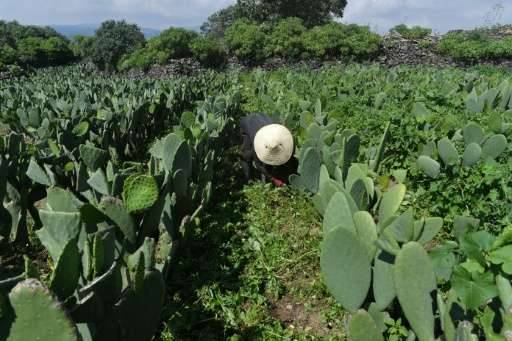
The BAIF Development Research Foundation (BDRF), which is located in Pune has now chosen to promote the use of cactus as cattle fodder.
Opuntia ficus, as it turns out, is utilised as both fodder for cattle and food for us, Homo Sapiens.
This thorn less cactus is found in arid and semiarid regions across the world, where it is eaten. The plant's fruit is used to produce jam and jelly in Mexico.
So how is this used for cattle fodder?
The cattle industry in the Southwest began to cultivate Opuntia as a new source of feed for cattle. It quickly gained popularity in Brazil and Mexico.
The following are some of the benefits of utilizing this cactus as fodder:
-
It takes relatively little water to grow since it can be cultivated in dry and semi-arid climates. It has a high water-use efficiency (WUE), using just 267 kilos of water to produce 1 kg of dry matter, compared to 400 kg for pearl millet.
-
The plant is very beneficial during monsoons. It can generate 40 kg of dry matter per mm of rainfall per year, compared to 25 kg in pearl millet, due to its high rain-use efficiency (RUE).
-
For minimal labour, it has the ability to provide a significant quantity of pleasant and nutritious green feed for animals.
-
Nothing goes to waste because the entire plant may be utilisedfor green fodder.
-
The nutritional value is out of this world. It contains a lot of vitamin Aas well as water-soluble carbs. The quality of the forage is equivalent to that of various other produced fodder crops.
-
It's also a great supply of water, as liquid makes up 90% of its content.
-
It may be used in a variety of soils. Not only that, but it may also aid in the battle against soil erosion, desertification, and the reclamation of damaged land.
-
It also has a great potential for capturing carbon in the soil as well as the air, lowering carbon emissions in the region.
The plant might be especially valuable in January, when there is a lack of green fodder, according to Ravi Kote, the institute's senior thematic program executive.
"We can claim this cactus has proven beneficial based on our experiments in Uruli Kanchan," he said.
With all of these benefits, farmers are sure to find this cactus useful and popular.











